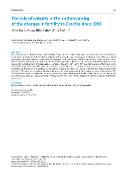The role of cohorts in the understanding of the changes in fertility in Czechia since 1990

Datum vydání
2022Publikováno v
Acta Universitatis Carolinae. GeographicaRočník / Číslo vydání
57 (1)ISBN / ISSN
ISSN: 0300-5402Metadata
Zobrazit celý záznamKolekce
Tato publikace má vydavatelskou verzi s DOI 10.14712/23361980.2022.6
Abstrakt
This article presents a detailed analysis of the fertility changes in Czechia since 1990 using the cohort approach and contributes to the overall understanding of the fertility postponement process. Because the timing of childbearing since 1990 has changed significantly, particular attention is devoted to the differences in the timing of fertility between cohorts. Data from the Human Fertility Database was analyzed via both standard (based on age-specific fertility rates) and advanced methods (postponement and recuperation indicators, parity progression ratio). Four groups of cohorts with specific fertility patterns were identified: 1965-1970, 1971-1976,1977-1982, and 1983-1990. These groups were impacted by the political, economic and social transformation of the 1990s, the financial crisis of 2008-2012 and other socio-economic changes during the study period in different ways. While the 1965-1970 cohort was associated with the rapid occurrence of postponement, it still reflected the early fertility pattern. The 1971-1976 cohort was associated with the most intensive degree of postponement, the 1977-1982 cohort can be linked to the onset of the deceleration of the postponement process, and the 1983-1990 cohort appears to be the first to stabilize their fertility at later ages.
Klíčová slova
fertility patterns, Czechia, cohort analysis, postponement and recuperation, parity progression ratio
Trvalý odkaz
https://hdl.handle.net/20.500.14178/2025Licence
Licence pro užití plného textu výsledku: Creative Commons Uveďte původ 4.0 International






